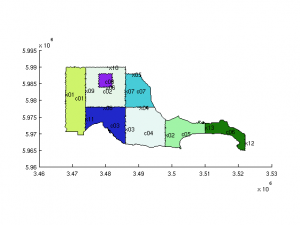NCAGGREGATE: Difference between revisions
From BAWiki
imported>Lang Guenther support of DMQS metadata and variables |
imported>Nickelsen Levin m added plotts in postprocessor |
||
| Line 65: | Line 65: | ||
Physical data, suitable for aggregation, are collected for different control volumes as well as exchanges between adjacent control volumes. | Physical data, suitable for aggregation, are collected for different control volumes as well as exchanges between adjacent control volumes. | ||
|preprocessor=[[NCANALYSE]], [[NCDELTA]], [[UNTRIM2007]], [[UNTRIM2]] | |preprocessor=[[NCANALYSE]], [[NCDELTA]], [[UNTRIM2007]], [[UNTRIM2]] | ||
|postprocessor=[[INSPECT_CONTROL_VOLUMES]], [[NCANALYSE]], [[NCAUTO]], [[NCDELTA]], [[NCPLOT]] | |postprocessor=[[INSPECT_CONTROL_VOLUMES]], [[NCANALYSE]], [[NCAUTO]], [[NCDELTA]], [[NCPLOT]], [[PLOTTS]] | ||
|language=Fortran95 | |language=Fortran95 | ||
|add_software=--- | |add_software=--- | ||
Revision as of 10:38, 11 November 2016
Basic Information
Name of Program
NCAGGREGATE
Version-Date
November 2016
Description-Date
November 2016
Catchwords
data analysis
postprocessor
synoptic data sets
tidal characteristic numbers
tide-independent characteristic numbers
differences for synoptic data sets
differences for tidal characteristic numbers
differences for tide-independent characteristic numbers
CF NetCDF format for 2D/3D data
aggregated data for control volumes
orthogonal unstructured grid model
support of computational results based on sub-grid bathymetry
parallelization using OpenMP
support of DMQS metadata and variables
Acknowledgment: This project took advantage of netCDF software developed by UCAR/Unidata (www.unidata.ucar.edu/software/netcdf/).
Short Description of Functionality
Program NCAGGRGATE may be useful in different situations which are listed in the following. For each type of application a list of programs (with sequence of execution) is given:
- aggregation of synoptic transport data for control volumes aiming at a precise balance of transports (water volume, salt, etc.):
- UNTRIM2007 or UNTRIM2,
- NCAGGREGATE,
- INSPECT_CONTROL_VOLUMES (check results),
- NCANALYSE, and
- DISPLAY_CONTROL_VOLUMES.
- aggregation of synoptic data (water level, salinity, etc.) aiming at the reduction of data complexity:
- UNTRIM2007 or UNTRIM2,
- NCAGGREGATE, and
- NCPLOT.
- aggregation of characteristic numbers aiming at the reduction of data complexity:
- UNTRIM2007 or UNTRIM2,
- NCANALYSE,
- NCPLOT (check characteristic numbers),
- NCAGGREGATE, and
- NCPLOT.
- aggregation of differences for characteristic numbers or synoptic data aiming at the reduction of data complexity:
During aggragation of classical data land binary masks (LBM) are automatically added to the result file. LBMs are used to describe the distribution of land and water at aggregation time. LBMs therefore empower visualization programs like NCPLOT to optimally present aggregated data in combination with a meaningful land-water-distribution.

Input-Files
- general input data (file type ncaggregate.dat);
- synoptic data sets (file type cf-netcdf.nc);
- control volumes (file type ipds.dat).
Output-Files
- data analysis result files (file type cf-netcdf.nc); see NetCDF aggregation for unstructured grids for details about the aggregational grid.
- (optional) informative printer file of program execution (file type ncaggregate.sdr)
- (optional) trace of program execution (file type ncaggregate.trc)
Methodology
Physical data, suitable for aggregation, are collected for different control volumes as well as exchanges between adjacent control volumes.
Program(s) to run before this Program
NCANALYSE, NCDELTA, UNTRIM2007, UNTRIM2
Program(s) to run after this Program
INSPECT_CONTROL_VOLUMES, NCANALYSE, NCAUTO, NCDELTA, NCPLOT, PLOTTS
Additional Information
Language
Fortran95
Additional software
---
Original Version
Maintenance
Documentation/Literature
template files available in $PROGHOME/examples/ncaggregate
back to Program Descriptions
